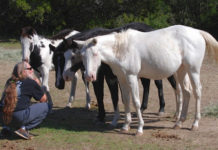A Quick Guide to Summer Yard Care: Keeping It Green Without Wasting Water
Reprinted with permission from The Environmental Magazine
Summer has finally arrived, and it’s the time of year that you will likely find yourself amping up your lawn care agenda. While watering, mowing, and planting flowers may be at the top of your to-do list, you should do so mindfully. Each lawn has different needs, but there are several key considerations you should make when planning your landscaping tasks. Depending on where you live, there are best practices to help ensure that your lawn is healthy—and the environment is protected all at the same time.
These tips can save you time, too, so you don’t spend so many hours away from summer fun.
1. Plant native grasses and plants that are suited to your climate
Your lawn should be entirely native. Seeds germinate best in the climates they originated in. Sow new grass seed in early spring, keeping in mind that earlier is generally better. Native grasses will withstand local temperatures better, and are also more adapted to handle local weeds, pests, and diseases.
2. Consider grass alternatives
If you live in a drought-prone area, or if your spring has already been unusually dry, consider planting synthetic grasses or drought-tolerant annuals and perennials. Synthetic grass requires no water and lasts over a decade, while drought-tolerant plants will be able to withstand brutal summer temperatures.
MORE: Don’t Rake Those Leaves – Good for Your Yard, and the Planet
Consider collecting rainwater to reuse it on your lawn and plants, and consider investing in an inexpensive lawn moisture meter to determine whether you are overwatering. An even simpler way of testing your lawn’s moisture content is to see if you can stick a screwdriver into the lawn. If six inches does not insert itself into the soil easily, the lawn may be too dry.
3. If you do have a lawn, mow regularly
You should mow your lawn at least once a week. Allowing the grass to grow too high will actually stunt its growth and encourage the growth of pesky weeds. While using a riding…










